The NVIDIA GeForce GTX 1650 Review, Feat. Zotac: Fighting Brute Force With Power Efficiency
by Ryan Smith & Nate Oh on May 3, 2019 10:15 AM ESTCompute & Synthetics
Shifting gears, we'll look at the compute and synthetic aspects of the GTX 1650. As we've seen the GTX 1660 Ti and GTX 1660 already, we aren't expecting anything too surprising here.
Beginning with CompuBench 2.0, the latest iteration of Kishonti's GPU compute benchmark suite offers a wide array of different practical compute workloads, and we’ve decided to focus on level set segmentation, optical flow modeling, and N-Body physics simulations.
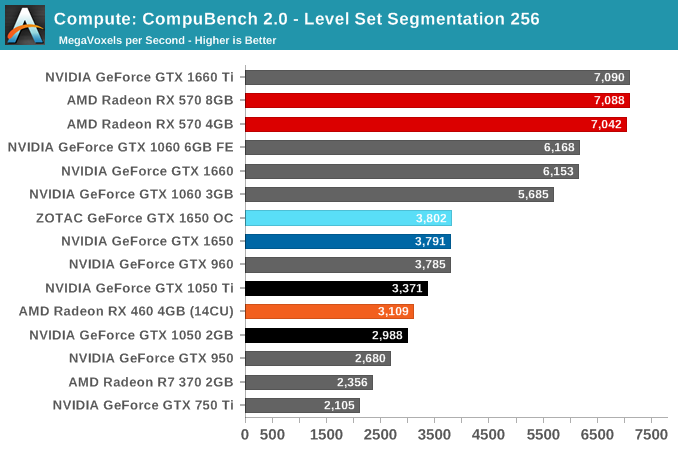
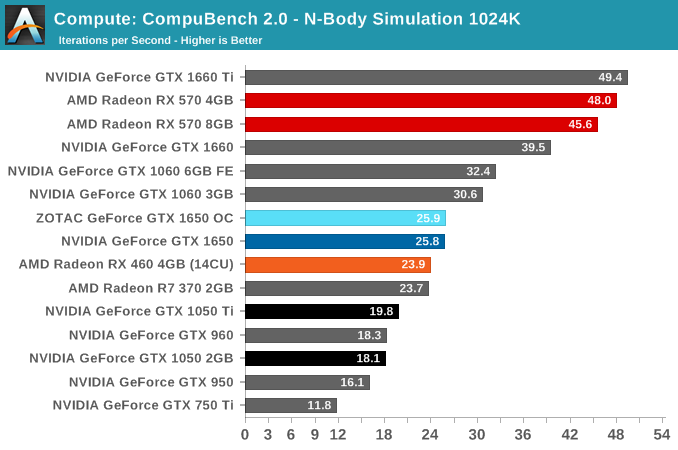
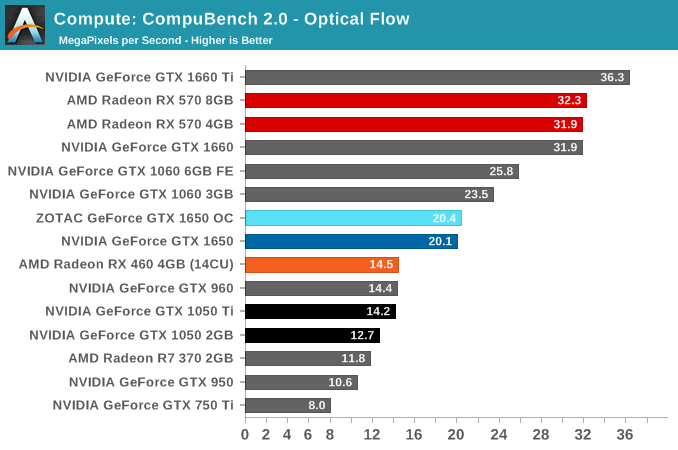
Moving on, we'll also look at single precision floating point performance with FAHBench, the official Folding @ Home benchmark. Folding @ Home is the popular Stanford-backed research and distributed computing initiative that has work distributed to millions of volunteer computers over the internet, each of which is responsible for a tiny slice of a protein folding simulation. FAHBench can test both single precision and double precision floating point performance, with single precision being the most useful metric for most consumer cards due to their low double precision performance.

Next is Geekbench 4's GPU compute suite. A multi-faceted test suite, Geekbench 4 runs seven different GPU sub-tests, ranging from face detection to FFTs, and then averages out their scores via their geometric mean. As a result Geekbench 4 isn't testing any one workload, but rather is an average of many different basic workloads.
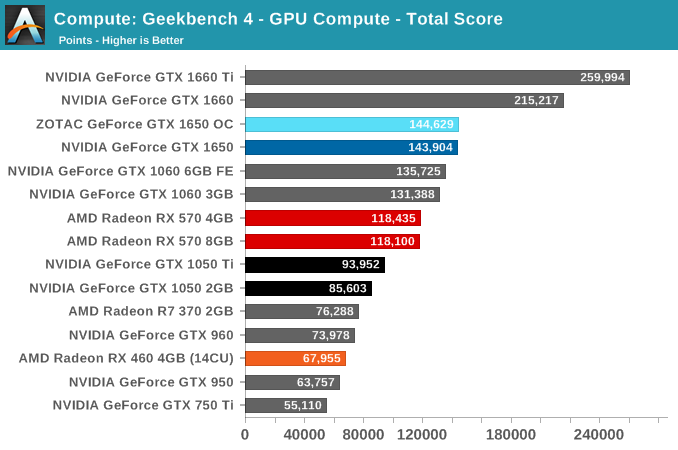
In lieu of Blender, which has yet to officially release a stable version with CUDA 10 support, we have the LuxRender-based LuxMark (OpenCL) and V-Ray (OpenCL and CUDA).
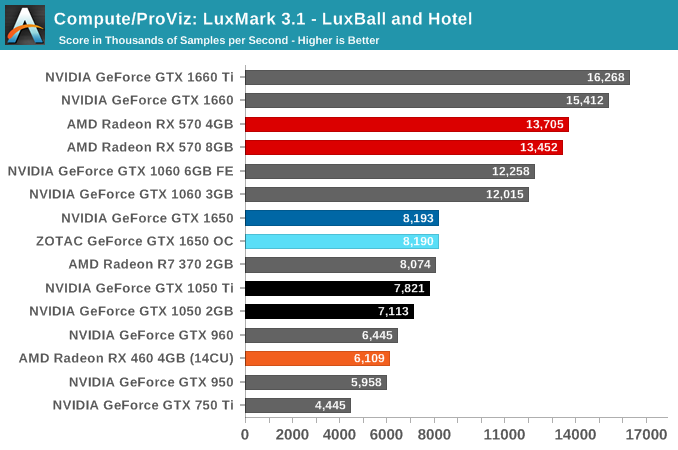
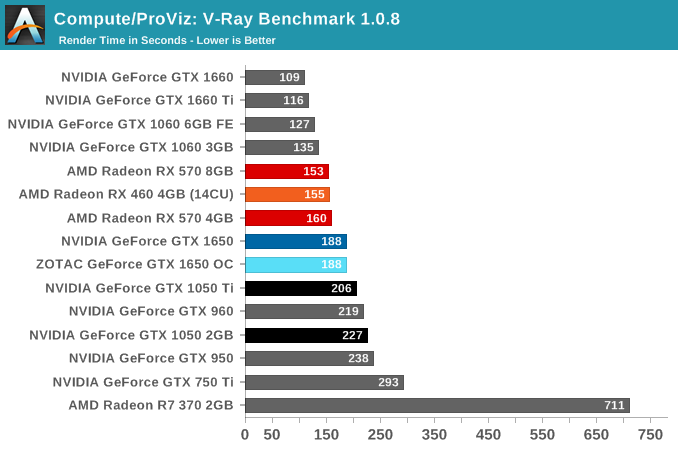
We'll also take a quick look at tessellation performance.
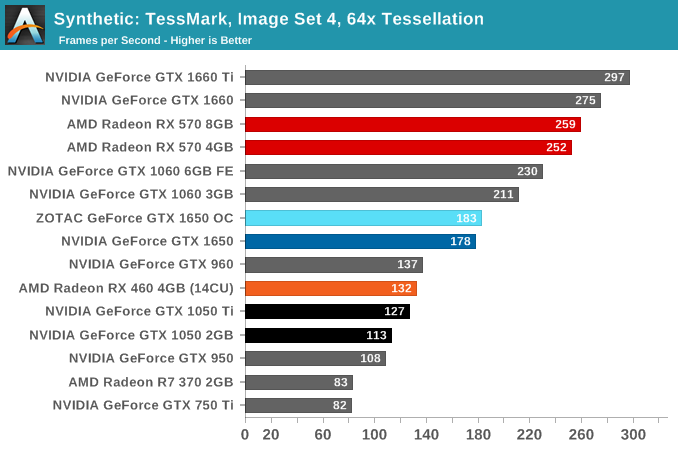
Finally, for looking at texel and pixel fillrate, we have the Beyond3D Test Suite. This test offers a slew of additional tests – many of which we use behind the scenes or in our earlier architectural analysis – but for now we’ll stick to simple pixel and texel fillrates.
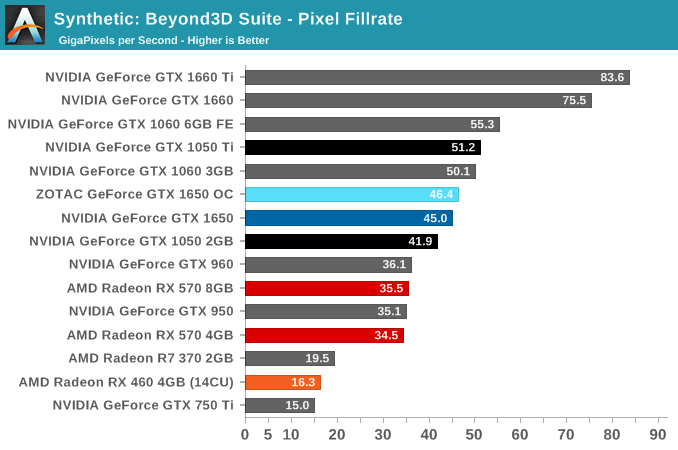

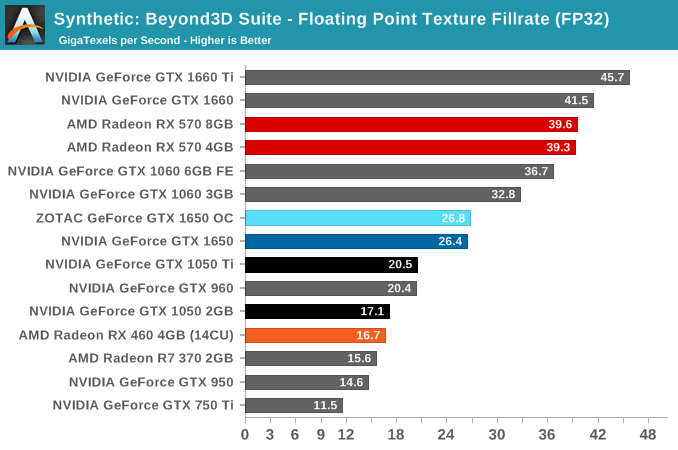










126 Comments
View All Comments
PeachNCream - Tuesday, May 7, 2019 - link
Agreed with nevc on this one. When you start discussing higher end and higher cost components, consideration for power consumption comes off the proverbial table to a great extent because priority is naturally assigned moreso to performance than purchase price or electrical consumption and TCO.eek2121 - Friday, May 3, 2019 - link
Disclaimer, not done reading the article yet, but I saw your comment.Some people look for low wattage cards that don't require a power connector. These types of cards are particularly suited for MiniITX systems that may sit under the TV. The 750ti was super popular because of this. Having Turings HEVC video encode/decode is really handy. You can put together a nice small MiniITX with something like the Node 202 and it will handle media duties much better than other solutions.
CptnPenguin - Friday, May 3, 2019 - link
That would be great if it actually had the Turing HVEC encoder - it does not; it retains the Volta encoder for cost saving or some other Nvidia-Alone-Knows reason. (source: Hardware Unboxed and Gamer's Nexus).Anyone buying a 1650 and expecting to get the Turing video encoding hardware is in for a nasty surprise.
Oxford Guy - Saturday, May 4, 2019 - link
"That would be great if it actually had the Turing HVEC encoder - it does not; it retains the Volta encoder"Yeah, lack of B support stinks.
JoeyJoJo123 - Friday, May 3, 2019 - link
Or if you're going with a miniITX low wattage system, you can cut out the 75w GPU and just go with a 65w AMD Ryzen 2400G since the integrated Vega GPU is perfectly suitable for an HTPC type system. It'll save you way more money with that logic.0ldman79 - Sunday, May 19, 2019 - link
What they are going to do though is look at the fast GPU + PSU vs the slower GPU alone.People with OEM boxes are going to buy one part at a time. Trust me on this, it's frustrating, but it's consistent.
Gich - Friday, May 3, 2019 - link
25$ a year? So 7cents a day?7cents is more then 1kWh where I live.
Yojimbo - Friday, May 3, 2019 - link
The us average is a bit over 13 cents per kilowatt hour. But I made an error in the calculation and was way off. It's more like $15 over 2 years and not $50. Sorry.DanNeely - Friday, May 3, 2019 - link
That's for an average of 2h/day gaming. Bump it up to a hard core 6h/day and you get around $50/2 years. Or 2h/day but somewhere with obnoxiously expensive electricity like Hawaii or Germany.rhysiam - Saturday, May 4, 2019 - link
I'd just like to point out that if you've gamed for an average of 6h per day over 2 years with a 570 instead of a 1650, then you've also been enjoying 10% or so extra performance. That's more than 4000 hours of higher detail settings and/or frame rates. If people are trying to calculate the true "value" of a card, then I would argue that this extra performance over time, let's not forget the performance benefits!